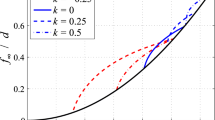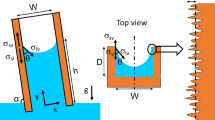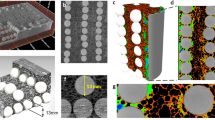Abstract
IT is commonly accepted that an abrupt change of section (such as a circumferential groove in a bar under the action of tension) will lead to a stress concentration at the root of the groove, and hence to a weakening of the bar in excess of that resulting from reduction in sectional area. That the bar is not necessarily weaker, but may be very much stronger, is now well established but is not generally recognized.
This is a preview of subscription content, access via your institution
Access options
Subscribe to this journal
Receive 51 print issues and online access
$199.00 per year
only $3.90 per issue
Buy this article
- Purchase on Springer Link
- Instant access to full article PDF
Prices may be subject to local taxes which are calculated during checkout
Similar content being viewed by others
References
Petersen, R. E., ‘Stress Concentration Design Factors’ (John Wiley, New York,1953).
Orowan, E., ‘Fundamentals of Brittle Behaviour in Metals’, Fatigue and Fracture of Metals Symposium at the Massachusetts Institute of Technology, 1950 (John Wiley, New York, 1952).
Author information
Authors and Affiliations
Rights and permissions
About this article
Cite this article
HERBERT, D. Strength of a Grooved Stud. Nature 184, 897–898 (1959). https://doi.org/10.1038/184897b0
Issue Date:
DOI: https://doi.org/10.1038/184897b0
Comments
By submitting a comment you agree to abide by our Terms and Community Guidelines. If you find something abusive or that does not comply with our terms or guidelines please flag it as inappropriate.



